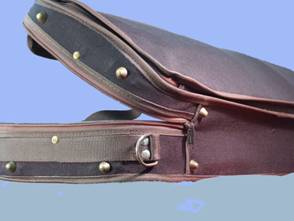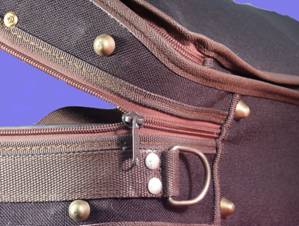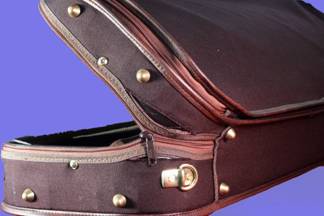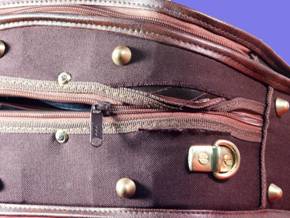Accidents
|
|
Related Links |
Below are some tips about what to do should you have an accident with your instrument:
- If your instrument cracks, do not touch the area! The natural oils on your fingers will contaminate the wood and lessen the bonding capacity of the glue, making it more difficult to make an invisible repair.
- If your bridge breaks or falls, remove the strings and tailpiece from the instrument. This prevents the tailpiece from scratching the top. Bring the instrument to a violinmaker for repair.
- If you notice a large new crack in the instrument, remove the strings, bridge, and tailpiece and bring the instrument to a violinmaker. If the crack is in the pegbox, don't push the pegs further in or the pegbox might break on the opposite side.
- If the fingerboard comes loose, remove the strings, bridge, and tailpiece and bring the instrument to a violinmaker. The neck alone is not strong enough to withstand the string tension and will warp.
- If a corner breaks off, put the broken piece into a film canister or similarly sturdy box for safekeeping and take the piece and the instrument to a violinmaker. The repair will be easy and inexpensive. However, if you wait too long to have the repair done, the sharp edges of the break may wear down making it impossible to achieve a perfect fit with the broken piece. Your violinmaker will have to create a new piece, which will be considerably more expensive and will not be the original wood.
- Never attempt any repair work on an instrument or a bow yourself. Leave your fragile and valuable instrument in the hands of a trained professional.
Bow Accidents
One of the more frustrating accidents for players is when a bow suddenly breaks while they are playing as they usually do. When this happens, the only logical conclusion seems to be that something was inherently wrong with the bow when it was purchased. The violin dealer, however, may suggest that a drop, blow, etc. at an earlier time--days or even a few weeks before the bow broke--caused a small crack to form, which eventually widened over time and finally gave way.
Of course, by this time it may be difficult for the player to recall such an incident, making the violin dealer's suggestion seem implausible. To avoid the awkward situation of thinking the bow you purchased only a few weeks ago may have already had a small starting crack, be sure to examine a bow very carefully for hairline cracks around the tip before you pay for it.? (See Selecting A Bow.)
Violin Case Accidents
 
 
|
|
|
|

